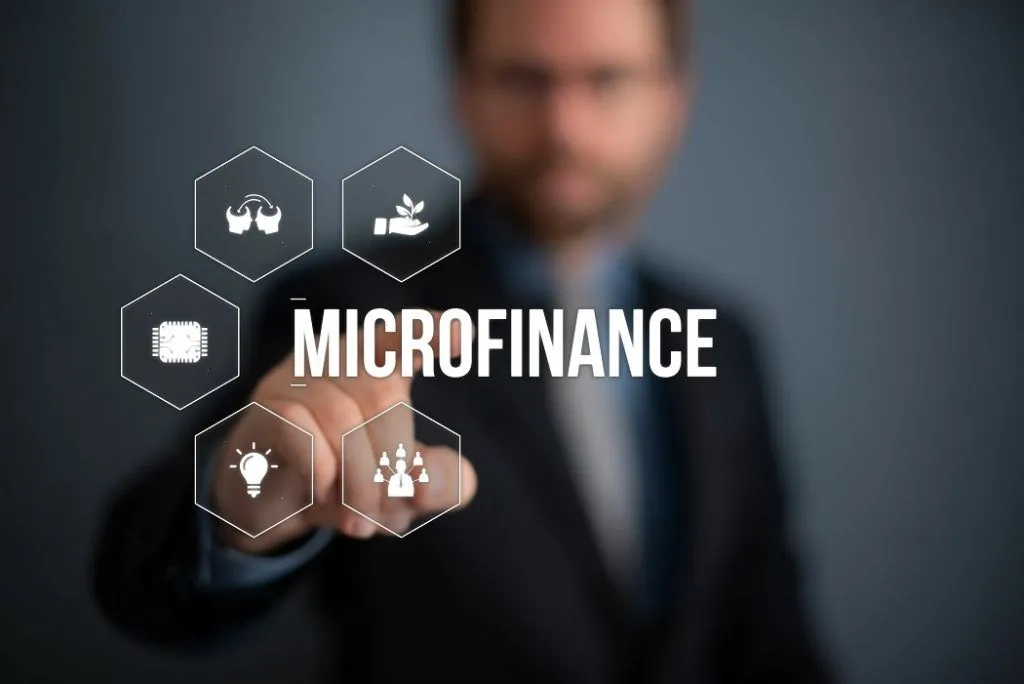Microfinance is typically a financial service provided to low-income individuals or groups who otherwise would have no other access to these services.
Microfinance industry has evolved over a period and have come a long way from where they initially began. The fact that 9 out of 10 SFB’s that are granted banking license were Microfinance Companies bears testimony to its growth.

Inspite of coming a long way, there is still a Microfinance dilemma – whether to hold on to the traditional methods or adapt to modern approach, which at times may not be in line with the basic principles of Microfinance.
The basic differentiator between a typical Bank and MFI was that Banks simply won't extend loans to those with little or no assets, and generally don't engage in small size loans whereas MFIs offered Collateral free small size loans. This enabled them to bring the “Underserved and Unbanked” customers to the more formal financial sector.
So, MFI’s granted loans backed by social collateral i.e., the Group Model of Lending (JLG Model). Group Lending is the most celebrated MF innovation. Group lending with joint liability was seen as an effective instrument to thwart the risk of collateral free loans. The social ties facilitated the collective actions of group members, allowing them to coordinate their repayment decisions and cooperate for their mutual benefit.
Over the period, personal relationships, and onsite interactions with clients – the basic hallmark of microfinance that separated MFIs from banks – have come down and now it has been dealt a major blow with the recent pandemic. This has adversely affected the JLG model, which in turn has impacted the collections to a great extent.
The current unfavorable circumstances have put the MFIs in a dilemma whether to continue with this Social Collateral Model or turn to the more conventional Security Based Lending Model. Moving entirely to Collateral Based Security Model will defeat the very purpose of MFI lending.
Hence MFIs are now expected to use innovative ways of reaching the underserved and poorest customers, mixing the unorthodox techniques such as group lending with more organized techniques like Credit based underwriting, Progressive lending, Short repayment instalment etc.
The process of Loan Disbursement and Repayment in JLG model of microfinance, which was primarily entirely cash based has currently undergone a transformation, due to the mobile and digital technology. Whereas in the traditional model loans were disbursed in Cash at the local MFI branch and in some cases at the JLG Center, now the same is getting credited directly to the bank account of the customers primarily through NEFT/IMPS (thanks to the PMJDY scheme under which majority of these customers have opened their bank accounts).
Traditionally repayments were collected in cash at the JLG Center Meetings, but now with the advent of services and technology, the MFIs are moving to cashless collection by various means like Cheques, ECS/NACH Debit Mandate, Aadhar Enabled Payment Systems (AePS), Bharat Bill Payment Systems (BBPS), Mobile Wallets, Business Correspondents, Debit Cards via Micro - ATMs and UPI. Based upon the method adopted, cashless collection is either done at the center meetings, local MFI branch or remotely via Electronic Debit Mandate.
These cashless transactions come with an array of advantages like reduction in operational risk (theft and fraud), increase in safety of field staff, increase in operational efficiency leading to reduction in operational expenses, saving of time and increase in customer convenience. These Cashless transactions has helped in servicing the customers remotely even during the times of pandemic.
This again has led to another Microfinance dilemma whether to continue with the Center Meetings which is fundamental to the existence of the JLG model or to go ahead with touchless, cashless loan disbursals and collections. Can the Discipline and Cohesion amongst the members be still maintained without the center meetings!!
The Covid‐19 pandemic and the restrictions that it brought with it has caused great damage to the MFI operations. This has led to the collapse of center meeting concept which in turn has adversely affected the collection efficiencies of the MFI’s.
The MFI operation and more specifically repayment is under serious threat as the mode of operations primarily involved physical interaction while distributing credits at the clients' doorsteps, conducting periodic group meetings and carrying out regular collections. With huge number of collectible accounts staring at them, and the collections going in for a toss, the MFI’s face a daunting task of bringing back and maintaining the collection efficiency of non-delinquent customers to 99% + efficiency and to resolve the cases that have already moved to higher buckets and NPA Resolution. The MFI’s which never had a separate collection team have now started to rethink on their strategies. With an increase in NPA’s on one hand and the need to disburse fresh loans on the other, the MFIs are now seriously considering of adopting a collection model.
This has given rise to a new dilemma whether to go with an Inhouse Collection Model or Outsource it to Debt Collection agencies.

Inhouse Collections team have more thorough knowledge of the client and the market. They are careful to maintain a relationship with the client, leading to possible client reactivation. The MFI retains control over the client interface, thus having more direct control and the collections practices remain in line with the institutions’ ethical standards
On the other hand, Inhouse collections model require specific staff and specialized training that only a few MFI’s have time or resources to extend. The control, monitoring and supervision of collection activities also imposes high costs. Investing time and efforts there might prove an hinderance to their core activities.
Considering the spread and reach of MFI’s, agencies may not be available in all areas and markets. As far as MFI collections is concerned, Collection agencies lack experience with the low-income sector. Considering that the MFI business is a relationship-based association, the customer may fail to acknowledge the agency staff which may lead to low success rate.
Having said that, Collection agencies come with their own expertise. Collection agencies offer trained and specialized staff that can dedicate ample time to the collection activities. Costly control and supervision of collection activities are transferred to the collection agency. The most important point being that the agency is more equipped to work through a variety of collection approaches like call center operations, pick up facility, field collection agents, legal support etc.
The way forward for MF Industry is to create, construct and carry out a Hybrid JLG model encompassing all the fine points of traditional JLG model combined with current trends in the finance industry as well as the changing technology and digital economy.
As far as Security or Collateral is concerned, loan repayment is often driven by expectations of repeat loans over time. Also, instead of giving high loan amount at one go, progressive loans – in which the high loan amount is fractioned and divided in two or three parts that can be cashed by the borrower only if the previous repayments are regular can be thought of. The plausible threat to deny defaulters’ access to future loans, either with the group or with individual loans, should be used as a tool in minimizing delinquency. Strong Credit bureau reports and tighter lending norms will ensure this.
The adoption of cashless transactions raises some fundamental questions about the JLG model – since the entire loan disbursal can be done to the bank account of the customers - are JLG center meetings necessary beyond the initial meetings for customer onboarding and since collections can also be done remotely, do JLG center meetings become unnecessary!! How will the MFI maintain Discipline and Cohesion of the Group!!
Any MFI Veteran would vouch for the fact that social collateral ceases to exist when familiarity, discipline, and cohesion amongst the JLG members cease to exist. JLG center meetings serves many purposes besides being a platform for disbursement and collection of loan amount. It acts as a stage for the MFI customers to interact with each other, give feedback and raise their concerns. It also offers a platform for the MFI to share information on new products, develop financial literacy amongst its customers and redress their grievances, if any. JLG center meetings inculcate discipline and establish cohesiveness amongst the JLG group members thus reinforcing Social Collateral.
So, the solution is to conduct center meetings regularly while the actual disbursement and collection can be done digitally and remotely through one of the various modes.
As far as outsourcing is concerned, the MFIs should focus on their core strength which is bringing financial services to the poor and making it financial sustainable by the economies of scale effect. With the development of technical tools over the past few decades, debt collection trends have undergone a significant evolution.

These help in more effective management of debt recovery. The MFI’s can continue to serve the non-delinquent customers in house, but they should consider outsourcing higher bucket and NPA collections to professional non-performing assets recovery agencies or bad debt collection companies which can offer omni channel communications with debtors to increase collection rates and to achieve a faster recovery of bad debts. Since companies offering bad debt recovery services are well equipped to provide a perfect synthesis of experience, proficiency, and new age technology it can head up to an effective collection efficiency and positive client experience.
Get the latest posts in your email